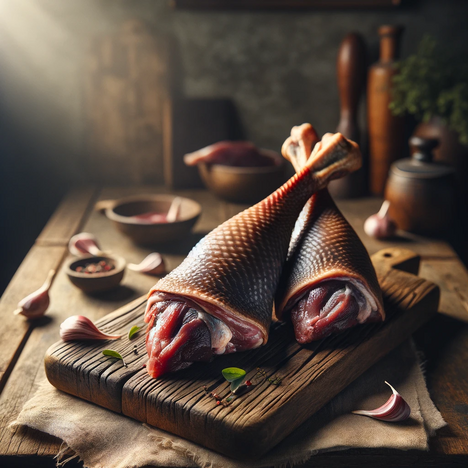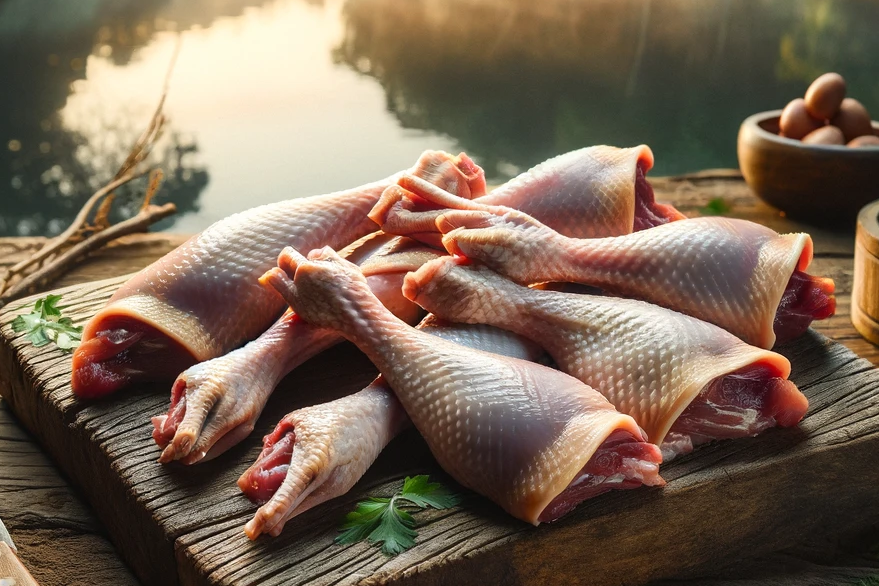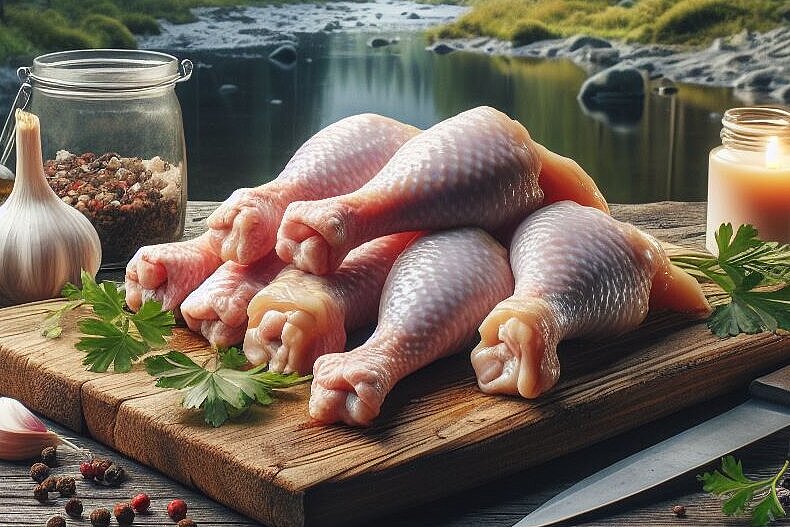Goose thigh

A dog's diet is a key aspect of its health and well-being. While most dog owners strive to provide their four-legged friends with a balanced and nutritious diet, questions occasionally arise about more specialized foods, such as goose legs. Goose thighs, a popular dish with humans, especially during festive occasions, might seem like a tasty treat for dogs at first glance. But is it really safe and healthy to feed goose legs to dogs? In this article, we'll take a closer look at goose thighs as a potential food for dogs, examining their benefits and highlighting possible risks.
What are goose legs?
Goose legs are the lower parts of the legs of a goose, which are rich in meat and are often prepared by roasting, braising or other cooking methods. They are known for their dark, juicy meat and rich, savory flavor. In addition to protein, goose thighs also contain fats, vitamins and minerals, making them a nutritious part of the human diet.
Benefits of goose thighs for dogs
High protein content
Protein is an essential building block in a dog's diet, necessary for growth, tissue repair and overall health. Goose thighs can be a good source of protein when fed in moderation.
Contains vitamins and minerals
Goose thighs contain vitamins such as B vitamins, which play a role in energy metabolism, and minerals such as iron, which is important for blood formation.
Disadvantages and risks
High fat content
Goose thighs are high in fat, which if consumed in excess can lead to obesity and associated health problems such as heart disease, diabetes and joint problems. High fat content can also cause pancreatitis, a serious and painful disease of the pancreas.
Bones can be dangerous
The bones in goose thighs, especially if they have been cooked, can splinter and pose a serious health risk. Splinters can injure the mouth, esophagus or digestive tract.
Spices and onions are harmful
Goose thighs are often prepared with spices and onions, which can be poisonous to dogs. Onions and garlic, for example, can lead to the destruction of red blood cells and anemia.
While goose thighs can be a tasty source of protein for dogs, the potential risks and disadvantages clearly outweigh the benefits. The high fat content and risk of broken bones make them a less than ideal choice for your dog's diet. In addition, the spices and onions commonly used to prepare them can be harmful to your dog's health. If you want to give your dog a special treat, it is advisable to opt for safer and healthier alternatives that have been specially developed for the nutritional needs of dogs. Always apply:
If you notice any signs of hypersensitivity or poisoning in your dog, you should see your vet immediately. We are not a substitute for a vet, but we try to be as accurate as possible. Every dog reacts differently and we recommend you get a second opinion or consult your vet if in doubt.
Stay healthy and take good care of your four-legged friend!😊
Similar to Goose thigh
Duck legs are the legs of the duck, a dark meat known for its rich flavor and juicy texture. Compared to breast meat, it contains more fat and connective tissue, making it an excellent source of...
Chicken thigh is a part of the chicken leg that consists of the thigh bone and the adjacent meat. Chicken thigh is rich in protein, iron, zinc and vitamin B12. It also contains fat, cholesterol and...
Pigeon legs, as the name suggests, come from the lower limbs of the pigeon. They are characterized by their dark, tender meat, which is a rich source of various nutrients. Unlike white poultry meat...
Turkey thighs come from the lower part of the legs of the turkey, a bird known for its tasty meat. These thighs consist of darker meat compared to the breast and contain both muscle and connective...


